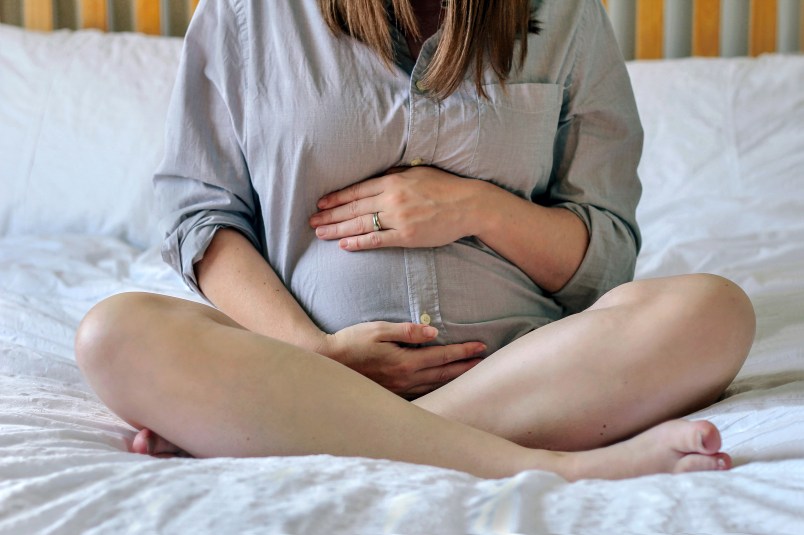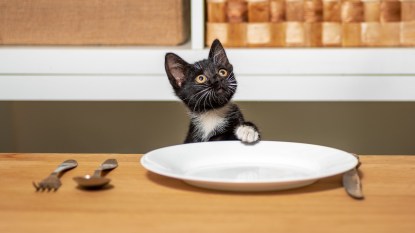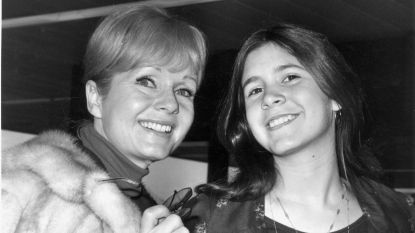I Was a Surrogate for Twins, and Nothing Has Ever Been More Rewarding

When I was 17, before I’d even thought about having children of my own, I watched a documentary about surrogacy. It followed a woman who became a surrogate for a couple who couldn’t conceive. It seemed like an amazing, life-changing thing to be able to do. But it wasn’t until years later when I’d had children of my own that I seriously considered becoming a surrogate. I saw a friend’s post on Facebook about how she’d donated her eggs to a couple who couldn’t conceive. She changed their lives; it was the best gift in the world. What was stopping me from doing something like that?
I was lucky. I’d never experienced the heartache of infertility, plus both of my births were quick and straightforward. My husband Alan and I had two beautiful children — a boy and a girl — and weren’t planning on having any more. In my mind, the seed was sown. “What do you think?” I tentatively asked Alan after searching online for surrogacy organizations. He promised to support me if it was what I wanted to do. We went to a conference and met people whose lives had been transformed by surrogacy. “How can we not do this?” he asked afterwards. He was as committed as I was.
In October 2013 we joined Surrogacy UK, an organization that connects surrogates with people who need them, and supports them through the process. Its mission is “friendship first,” and they encourage members to build a rapport and trust before embarking on their surrogacy journey, which really appealed to us. We met Caroline and Iain at one of the organization’s social events and instantly hit it off with them. And when we learned of their journey — several unsuccessful rounds of IVF over seven years — we knew we had to help them.
Surrogacy UK recommends a “getting to know you” period of three months before starting the IVF process. We introduced Caroline and Iain to our kids and met regularly for days out. By the end of the three months, we had formed a strong friendship. The four of us sat down with Surrogacy UK and drew up an agreement to make sure we were all on the same page. We agreed I’d have a natural IVF cycle, implanting two embryos made from Caroline’s eggs and Iain’s sperm, which had been frozen from previous rounds of IVF. They’d be the parents — I’d just be growing their baby.
We were lucky. Ten days after the two embryos had been implanted, we got a call from the fertility clinic to say the pregnancy test was positive. I was thrilled for Caroline and Iain, and even more thrilled at the scan when we discovered there were two heartbeats!
Carrying twins felt like a huge responsibility. I was extra careful, making sure I ate well and rested. I felt a little more tired than with my own children, but it was a straightforward pregnancy. The children loved seeing my bump grow, and were more accepting of the situation than some adults I knew. I explained it all to them in simple terms: “Caroline’s tummy’s broken, so I’m carrying her babies and will give them back to her when they’re born,” I said.
By the time I’d got to 36 weeks, I was enormous and struggling to walk. At an appointment with my consultant, I begged to be induced, and was booked in for 37 weeks plus one day. That morning, at 8 a.m., I arrived at the hospital with Alan, Caroline, and Iain. I’d never been induced before and felt a bit nervous about what was about to happen. I could tell that Caroline and Iain were anxious, too. We were greeted by two midwives who led us to the delivery suite and asked questions about our situation, which took an hour! The midwives were fascinated.
I was hooked up to a monitor, which showed I was having contractions — that was a surprise, as I wasn’t in any discomfort. By 12.30 p.m., I learned I was dilated. The midwife explained she was going to try and break twin one’s water, and when she pierced the amniotic sac the gush was like a waterfall! “Oops, sorry,” I apologized every time I leaked.
An hour passed and I felt nothing but mild tightenings, although the monitor still showed I was contracting. At 1:45 p.m. the midwife hooked me up to a syntocinon drip to encourage labor, and increased the dose steadily over the next few hours. By 5 p.m., my contractions started to get really intense and frequent.
I stood next to the bed, rocking my hips to ease the pressure in my bump and back. That’s when Alan became my rock. He rubbed my back and reminded me to breathe slowly. “You can do this,” he told me whenever the contractions became intense. Iain and Caroline popped out of the room every so often to talk to their parents, who’d arrived at hospital. To keep focused, I blocked out everyone in the room except Alan. I was soon totally “in the zone,” and not really aware of anything other than my labor.
When I was examined again, I learned I was still minimally dilated, and I started getting upset, worrying that I wasn’t doing well. One of my other labors had taken just one hour, the other four hours; this was taking forever. The midwife handed me some gas and air, and a few puffs of that, along with Alan’s words of encouragement, got me back on track. Soon I started to feel one twin’s head getting lower, and felt an overwhelming urge to bear down. “Don’t push yet!” the midwife said. One side of my cervix was dilating at a different rate to the other — I was lopsided.
Trying not to push when my body was telling me to was almost impossible, but deep breathing and the gas helped to calm me down and keep me focused and strong. Finally, the midwife said my cervix had evened out and I could start pushing. It was a relief when I lay back on the bed and started to bear down, holding Alan’s hand and mooing like a cow. At 7:40 p.m., on my second push, I felt enormous pressure and baby Charlotte’s head came out, then her body. There was a flurry of activity, and after a few minutes of checks at the side of the room, she was pronounced healthy. Seeing Caroline and Iain’s tearful faces was incredible. I could hardly believe they’d become parents at last. There was no time to dwell on it, though. A doctor stood over me, holding my stomach to prevent the second twin from moving out of position.
My contractions had stopped, but the team reassured me that everything would kick off again soon. I lay still while Alan held my hand, and Caroline and Iain cuddled baby Charlotte. Sure enough, after a few minutes, a huge contraction swept through my bump. It was 7:50 p.m., and I followed my body’s instructions to bear down. To everyone’s surprise, with just one big push, baby Amelie was born.
I lay back while Amelie was checked, wrapped, and handed to Iain, while Caroline held Charlotte. Seeing the looks of sheer joy on Caroline and Iain’s faces made me feel like the most privileged person in the world. “We’ve done it!” I mouthed to them, bursting into tears. Once I’d delivered the placentas and recovered, the staff left so that just the four of us — plus the twins — were in the room together. Alan took newborn photos, and Caroline and Iain cuddled with the twins, and gave them their first bottle feeds. After that special time, Alan and I left the new family alone.
I was able to get some much-needed uninterrupted sleep at home, which felt great. I was on cloud nine that day, and still feel incredibly proud of what I was able to achieve for Caroline and Iain. We’re still the best of friends and are in touch most days, which is fantastic. Seeing the twins grow, and knowing I played such a significant part in their birth, is incredible.
Being a surrogate is quite addictive, and I’m already planning to help another couple have a baby. As long as I’m healthy, I’ll carry on. To me, if you can do something to make other people’s dreams come true, then why wouldn’t you?
This post was written by Rachel Toal. For more, check out our sister site Mother & Baby.
More From FIRST
Letting Go of the Fairy Tale: How I Found My Path to Motherhood
I Went Out for Ice Cream and Came Back With a Baby
Sorry, Women Who Only Ate Ice Chips During Labor — You Could’ve Had Real Food













